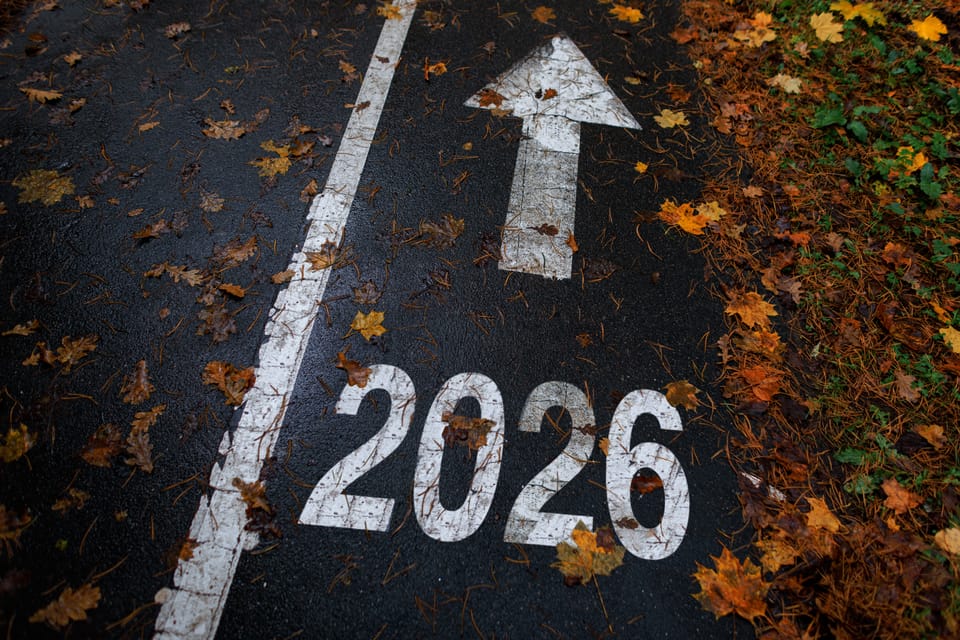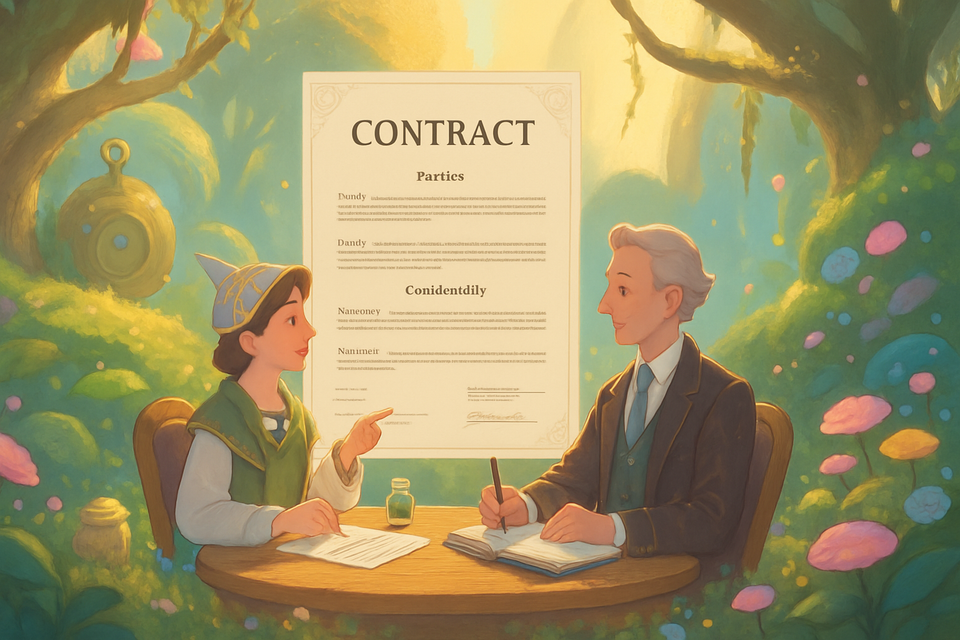The $100 Avocado
What Actually Happens When You Buy Groceries With a Credit Card | Or: A person walks into Trader Joe’s and pays $100 dollars with an American Express. Where does that money go? | Spoiler: Trader Joe’s does not get 100 dollars.


If You Only Had 60 Seconds to Read This Article (Click Here 🗞️)
Credit card payments are a relay race you never see. The issuer bank, the card network, and the merchant’s processor each take a slice before the store gets paid. Interchange to the issuer is the big bite, assessments are the network’s toll, and the processor adds its markup. Debit usually costs far less than credit because regulation caps large-bank debit rates.
Run the $100 checkout. A typical rewards Visa or Mastercard costs about $2.33 in total fees, so the merchant nets roughly $97.67. A premium Amex is closer to $2.70, net about $97.30. A regulated debit swipe is around 36 to 46 cents, so the store keeps roughly $99.60. That quiet cut is the swipe tax. It is not a government levy, just the price of riding the card rails.
Points are not free. The issuer collects interchange, buys miles or hotel points in bulk for cheap, and hands you 1 to 5 points per dollar. The spread is profit. Networks get their toll, the merchant funds the rebate through fees, and prices inch up so everyone pays for the few who chase rewards. Your free Hyatt night was prepaid at the grocery store.
What to do. As a shopper, use debit at small shops, take cash discounts when offered, and pay cards in full so a $100 basket does not become $125 with interest. As a merchant, route transactions smartly, capture clean data, negotiate Amex when you can, and consider cash discounts or compliant surcharging. The system works because incentives line up, but the benefits tilt toward heavy card users while costs are shared across the price tag.
Everything else you need to know is just below 👇🏻
🎞️: Powered by NotebookLM @ UpNonStop
The invisible relay team
Tap your card, and a small army wakes up. There is the issuer bank, the one that gave you the card. There is the card network, Visa, Mastercard, American Express, or Discover. There is the acquirer or processor, which is the merchant’s bank or payments company. Around them you have gateways, tokenization services, fraud scorers, risk engines, and a help desk that you never see. Every hop takes a slice. Your 100 dollars does not move in a straight line. It trickles through tollbooths.
Three tollbooths matter most.
Interchange, the issuer’s cut.
This is the big fee that merchants pay to your issuing bank. For a common rewards credit card, the range is roughly 1.5 to 2.2 percent, plus a small fixed amount per transaction. Premium cards are more expensive. That is the plan, not a mistake.
Assessments, the network’s toll.
Visa, Mastercard, American Express, and Discover collect their own rail fee for moving the money. Think roughly 0.1 to 0.2 percent, plus small add-ons.
Processor markup, the plumbing bill.
The merchant’s processor adds basis points and a per swipe fixed amount for moving the funds, providing tools, and fighting fraud.
Debit usually costs less. Regulated debit from large banks lands near 0.05 percent plus about 21 cents. Credit is often 2 to 3 percent. American Express tends to be pricier than a standard Visa or Mastercard, especially on premium cards. None of this is a secret to merchants. For you, it is hidden in plain sight because your points are supposed to feel free.
The $100 checkout, with numbers
Let’s run the math for three common plastics.
Rewards Visa or Mastercard credit
Interchange around 1.8 percent plus 10 cents, so 1 dollar and 90 cents.
Network assessments around 0.13 percent, so 13 cents.
Processor markup around 0.25 percent plus 5 cents, so 30 cents.
Total fees roughly 2 dollars and 33 cents.
Trader Joe’s gets about 97 dollars and 67 cents.
American Express premium rewards
Blended fee to the merchant around 2.7 percent, so 2 dollars and 70 cents.
Trader Joe’s gets about 97 dollars and 30 cents.
Regulated debit card
Interchange 0.05 percent plus 21 cents, so about 26 cents.
Network and processor odds and ends, about 10 to 20 cents.
Total fees around 36 to 46 cents.
Trader Joe’s keeps roughly 99 dollars and 54 to 64 cents.
The extra 2 to 3 percent on credit is the swipe tax. It is not a government tax. It is the cost of using the card rails. It is also the reason your free Hyatt night exists. Merchants subsidize your rewards. Prices creep up a little for everyone so that a smaller group can chase points like sport.
Where points really come from
Here is the loop.
The issuer collects interchange from the merchant.
The issuer buys miles or points from an airline or hotel at a wholesale rate, often far less than what you think each point is worth.
The issuer gives you 1 to 5 points per dollar in popular categories.
You feel clever.
The issuer keeps the spread, meaning interchange in is higher than the cost of the points out.
The network collects its toll.
The merchant pays.
Then you tap again, and the loop resets.
Issuers do not run a charity. They run a machine that turns your spend into profit. The main parts are interchange, interest if you carry a balance, annual fees, and the value of data, minus the cost of points, fraud, and chargebacks. Even if you never pay a penny of interest, interchange alone can make you a profitable customer, especially when you put big categories on premium cards.
Why merchants keep taking cards
If this feels one sided, you are not wrong. So why keep swiping cards at all?
Conversion: People spend more, and more often, when paying with plastic or a phone tap.
Average ticket size: Baskets are larger when checkout is easy.
Risk shift: The card system, not the grocer, absorbs certain types of fraud.
Customer expectation: Refuse cards and you lose sales, sometimes permanently.
Operational sanity: Cash handling is slow, risky, and costly.
Ecommerce reality: Online retail cannot run without cards.
Merchants see the math. Two to three percent hurts, but lost sales hurt more. So they accept cards and price accordingly.
How prices swallow the swipe
Two sided markets follow a simple pattern. The side that is more price sensitive gets charged less. Cardholders hate fees and love points. Merchants complain but can push cost into prices. The result is predictable. Payments feel free for you. Merchants pay the bill. Over time, customers pay too, inside higher shelf prices.
You do not see a 2 dollar and 33 cent line for credit card fees on your 100 dollar grocery run. You see a slightly higher price on almost everything. It is a few cents here, a few cents there, and it never calls attention to itself.
Why some cards cost more than others
Fees depend on several levers.
Card type: No frills cards are cheaper than gold or platinum or super bonus cards.
Merchant category: Groceries, restaurants, travel, utilities, and others have different rate tables.
Channel: In person chip or tap usually costs less than online, where fraud risk is higher.
Ticket size: Very small tickets may get special treatment. Very large tickets can land in different buckets.
Fraud profile: Better data and secure tokens can earn better pricing.
American Express often costs more than standard Visa or Mastercard, especially on premium cards. That is why some small shops say No Amex or set a minimum for cards. Rules on surcharging and minimums differ by network and by state. The broad reality is still simple. The richer your rewards, the more expensive you are to accept.
Processors, pricing games, and merchant confusion
If you have ever seen a merchant statement, you know it looks like a cipher. Three pricing models are common.
Interchange plus.
You pay the raw interchange and assessments, then a clearly quoted markup. Often cheapest for larger or savvy merchants.
Tiered.
Transactions get placed in qualified, mid, or nonqualified buckets, each with a different rate. Easy to read, often costly in practice.
Flat or blended.
One simple rate, for example 2.75 percent plus 10 cents, that bundles everything. Very clear. Not always cheapest.
Merchants often dislike the networks less than they dislike the opacity around pricing. If you cannot predict your cost of acceptance, you cannot price your goods with confidence. The mess is part strategy, part legacy technology, and part a simple fact. Complexity helps margin.
Chargebacks, fraud, and the price of trust
Payments require trust. The system spends heavily on fraud monitoring, encryption, tokenization, and dispute resolution. Those costs get baked into the tolls. When a card is stolen and a criminal tries to buy gift cards at a supermarket, the rails attempt to detect it and block it before the cashier finishes bagging apples. When a real customer disputes a charge, the rails orchestrate the reversal and the investigation. None of this is a defense of high fees. It is a reminder that secure money movement is not free to run.
The consumer playbook
If you care about the impact of your swipe, here is a practical, no drama approach.
Use debit at small, independent shops, especially for tiny purchases where cents matter.
If a store offers a cash discount, consider taking it. That is a way to match price to cost.
Use rewards cards with discipline. Pay in full. Do not turn a 100 dollar avocado into a 125 dollar avocado by letting a balance ride at 20 percent APR.
Do not shame merchants for credit card minimums or for a modest surcharge. Your five times points category is their haircut.
If you love points, enjoy them. Just be honest about where they come from. You are not breaking the system. You are riding it. Someone pays for the ride, and much of that cost circles back to you in higher prices.
The merchant counter playbook
Here are the levers that matter on the other side of the counter.
Route transactions wisely. Pick a processor that supports the best interchange categories for your industry.
Capture good data. Proper category codes, address verification, and tokenization can lower fraud risk and improve pricing.
Consider cash discounts or compliant surcharging where allowed. Price the payment method, not the product.
Read the statement. Hidden basis points add up. Once you see them, you can negotiate.
Negotiate with American Express if your volume justifies the call. Many merchants get relief.
Mind the channel. Card present with chip or tap usually beats online or keyed rates.
The goal is to reduce the effective cost without breaking checkout flow. Savings do not matter if your line gets longer and customers leave.
Myth and reality
Myth: Rewards are free because banks make money only on interest, not on me.
Reality: Interchange alone funds a lot of points. Interest and annual fees amplify profits, but they are not required to make you a good customer.
Myth: If everyone switched to debit, prices would drop next week.
Reality: Prices do not rebase in a week. Card rails still have costs, and merchants change prices at different speeds. Over time, lower acceptance costs tend to show up in slower price growth or in targeted discounts.
Myth: Merchants can simply refuse expensive cards.
Reality: Some do, most cannot. If your customers expect plastic, refusal is a revenue hit. Market power sits with cardholders who have been trained to expect universal acceptance.
Myth: Flat rate processors are always a rip off.
Reality: They can be more expensive per swipe. For small or seasonal merchants, simplicity and bundled tools can justify the premium.
Your $100 receipt, annotated
Here is the checkout you never see on your phone.
Trader Joe’s
Total charged: 100.00
Estimated card rails cost on a common rewards credit card: 2.33
Estimated net deposit: 97.67
Swap in a premium American Express and the net falls to roughly 97.30. Use a regulated debit card and the net rises to roughly 99.60. The groceries in the bag do not change. The toll does.
Who really paid for your free night
You did, just not at the hotel. You paid at the grocery store, the coffee shop, the rideshare, the bookstore, the concert ticket site, and the streaming service. Every card friendly checkout, every time, folded a small cut into the price. The points you earn are a rebate funded by merchants, priced into the goods, routed through banks and networks, and handed back to you in miles.
Everyone gets something, although not equally.
You feel smart and you travel more.
The issuer collects interchange and fees and keeps you engaged.
The network collects its rail toll and grows volume.
The merchant grumbles, but sells more than if cards were refused.
It is not a smoke filled plot. It is a set of incentives that line up just enough that everyone stays in the game.
How to spot the swipe tax in daily life
Look for signals like these.
A cash price that differs from a card price at gas stations.
A small sign near the register that asks for a minimum card purchase.
A restaurant notice that adds a small percent for card payments.
A No Amex sticker at a family owned shop.
Discounts for ACH or checks on big ticket items like HVAC or tuition.
Each one is a polite message from a merchant. Your card is expensive. Help us avoid unnecessary bleed.
Who benefits most from points
There is a policy angle here. Higher income households often earn more rewards because they spend more and qualify for premium cards. Lower income households are more likely to pay cash or use debit, yet they still share in the price effects created by card acceptance. That does not make points bad. It means the subsidy often flows side to side, from all shoppers to heavy card users. Reasonable people can debate whether that is healthy for small businesses and for competition. You do not have to pick a side to read the scoreboard.
The statement decoder
If you ever need to read a merchant statement without a headache, know these terms.
Interchange: The fee merchants pay to the cardholder’s issuing bank. The largest slice.
Assessment: The network’s toll for riding the rails. Small, but on every transaction.
Acquirer or processor: The merchant’s bank or provider that moves the funds and manages risk.
Gateway: The software bridge that transmits card data securely, important online.
Chargeback: A forced reversal after a cardholder disputes a transaction.
Tokenization: Replacing the card number with a secure token, used by Apple Pay and online wallets.
Basis points: Hundredths of a percent. Twenty five basis points equal 0.25 percent.
If you speak those seven words with confidence, you can sit through any payments pitch and ask the right questions.
The punchline and the teaser
If you love rewards, keep playing. Just stop pretending the money appears by magic. It comes from the price tag on nearly everything you buy. The swipe tax is the quiet price of convenience. The points are your receipt for paying it.
Next up in The Rewards Cartel
Airlines Are Banks That Happen to Fly Planes
How an airline can sell billions of miles without a single takeoff, why loyalty programs behave like financial products, and what that means for you. Spoiler: you are both the customer and the product, sometimes in the same transaction.




